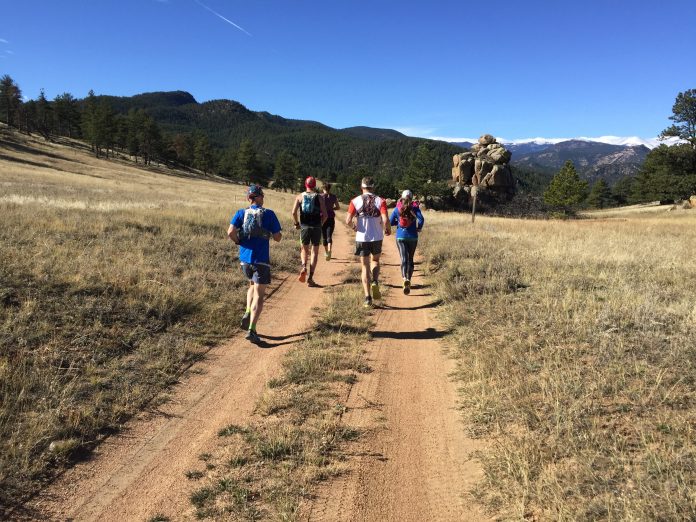We often think about running in units of meters or miles, from the shortest official Olympic race (the 100-meter dash) to the longest footrace in the world (the torturous Self Transcendence 3100-miler).
The atomic unit of running, though, is the step. It’s those thousands of individual steps that build up to meters and miles. With wearable tech increasingly inescapable, many of us are becoming intimately familiar with the two main measures of our steps: our run cadences and our step counts.
We’ve all heard various rules of thumb about our steps, such as that we should strive for a cadence of 180 steps per minute or a daily step count of 10,000. What, though, does the research tell us?
What Is The Ideal Run Cadence?
Cadence refers to the number of steps we take per minute. Cadences can vary greatly throughout a run, depending on the terrain, altitude gain, and our speed.
180 steps per minute is often thought of as an ideal cadence for runners, though there’s nothing “magic” about this exact number. Almost all successful runners, though, run at a cadence above 170. One study of 20 competitors in a 100k race found an average cadence of 182.0 steps per minute. There was a huge variation cadence between runners, but each runner tended to maintain the same cadence as the race progressed.
If your stride is well below 180 strides per minute, you may find many benefits from increasing your cadence. These include:
- Greater efficiency when going uphill
- Ability to preserve energy when you’re tired
- Increased stability when needed, such as going downhill on technical terrain.
- Fewer injuries, because you will tend to hit midfoot compared to runners with longer strides. The longer stride causes runners to extend their legs out in front of their body, which can lead to injuries.
- Increases in speed, because a higher cadence produces more force
There are exceptions to the fast-cadence rule, of course. Jim Walmsley, with his big, loping strides, has a famously slow cadence — close to 165. This didn’t prevent him from setting the the Western States 100 course record.
If a Walmsley-like stride works, more power to you. But for most of us, a faster cadence will work better. I’ve gradually increased my cadence over the past couple of years and now my natural stride clocks in at about 178 steps per minute, and that works for me.

How Many Steps Should You Take In A Day?
There is no “right” number of steps to take in a day. The commonly recommended goal of 10,000 is mostly arbitrary, and dervices from a Japanese marketing campaign for a device called the Manpo-kei, whose name translates to “10,000 steps meter”.
It is true that more movement during the day is associated with better health outcomes. A Harvard Medical School study found that women who averaged 4,400 daily steps had a 41% reduction in mortality compared with sedentary women who averaged 2,700 steps a day. Morbidity rates leveled off at 7,500 steps per day.
Runners are, by definition, active, so I’m not sure we need to worry too much about our daily step counts. However, checking my step count after a long run serves as a little reminder about my effort, and it’s a point of pride to see how many steps I may be able to rack up in a day (my record is 106,000, at the Run Rabbit Run 50 miler).
I do find tracking steps useful on non-running days. I work in a sedentary office job, and checking the steps I’ve walked is a little reminder of the day’s activity, motivating me to move my body and take a walk.
It’s also illuminating: on a recent weekend day I spent the morning at home doing chores, and racked up almost 10,000 steps by lunchtime. On the other hand, a long travel day in December felt like a lot of effort – schlepping through airports and negotiating rental car counters — but resulted in far fewer steps than I’d expected.
The worst days for steps are packed with meetings, those long days of sitting in conference rooms. I rack up almost no steps at all unless I embrace my social awkwardness and take laps around the office hallways and up the fire stairs.
And now, as I finish writing this post, I see that I’ve walked less than 2,000 steps today, so it’s time to step out for a brisk walk.












